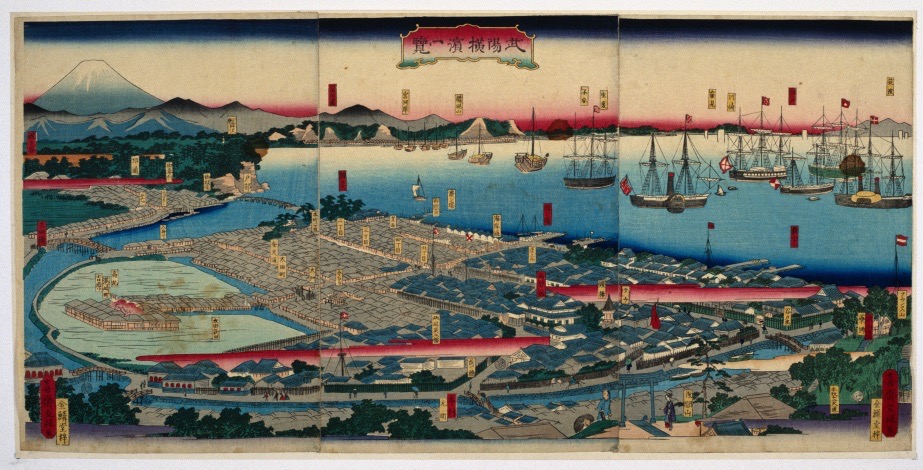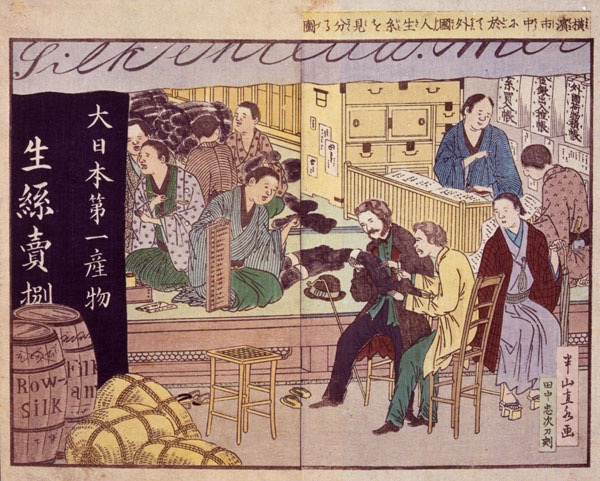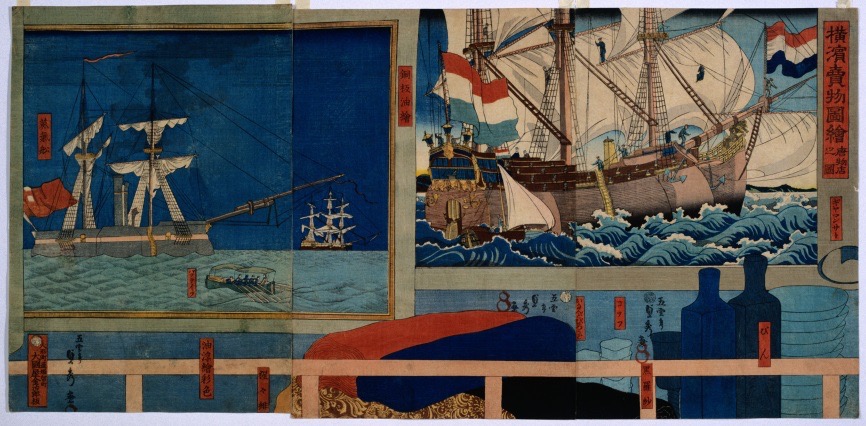[6] Yokohama Port and Japan as a Trading Country
At the time of the opening of Yokohama Port, Japan’s major exports were raw silk, green tea, and copper. Especially, raw silk significantly contributed to the development of Yokohama Port ranking top in export items of the port for 82 years since the opening until 1941

At the time of opening of the country, raw silk production volume in Europe declined because silkworm disease had spread for a long time in Europe where the raw silk had been consumed the most in the world. In addition, raw silk export volume from China, the biggest exporter in the world, decreased due to the impact of the Opium War.
Foreign merchants who had been seeking raw silk knew that high-quality raw silk could be acquired from Japan that had just opened the country so they began to rely on importing raw silk from Japan.
Japanese merchants who noticed foreign merchants were interested in raw silk bought up about 80% of national production volume to export it from Yokohama Port through foreign merchants. Yokohama Port began to develop thanks to such merchants’ efforts.

On the other hand, main imports were industrial products produced in Europe such as cotton textiles and wool textiles.
Imported goods at the time of opening the port represented civilization itself for Japanese people, as seen in the fact that the word “Hakuraihin (foreign goods)” had a nuance of something valuable.
Japan began to take a step forward to a modern and trading country backed by the development of export industry and the import of civilization after Yokohama Port opened.

